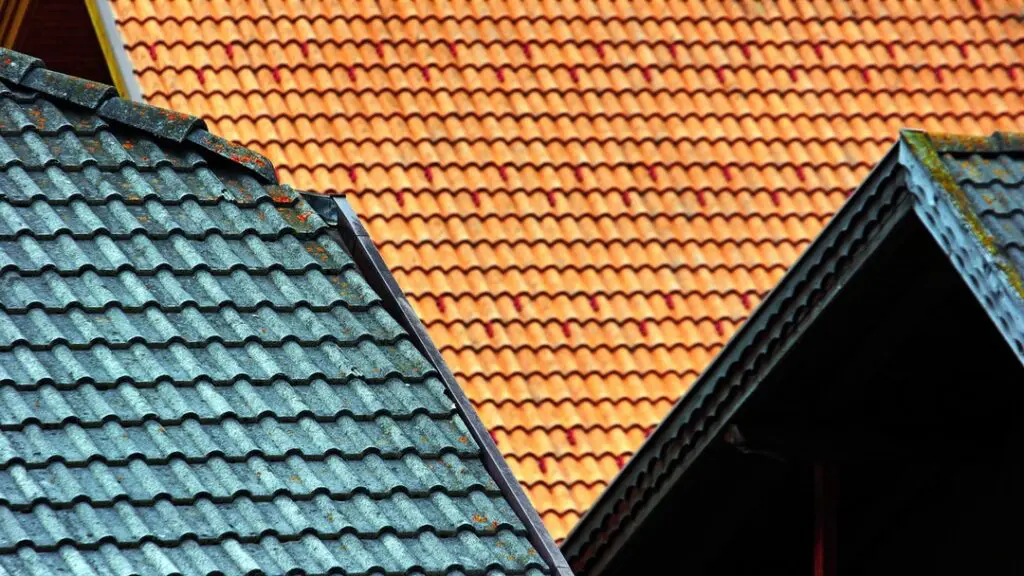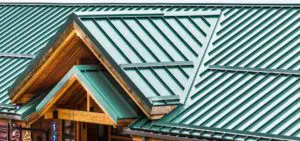
The Ultimate Guide to Different Types of Roofs for Roof Replacements
In 2021, the roofing industry’s market size, measured by revenue, was over $52 billion.
Besides, apart from routine maintenance, roofs rarely receive much attention. When problems like leaking arise, the importance of a good roof rises to the top of the home renovation priority list.

Maintaining the exterior of your home is just as important as keeping the interior in good shape. The roof shields your house from the elements and maintains a comfortable interior temperature.
COMPARE QUOTESWhen the moment comes to change your roof, you have several options. Here is an ultimate guide to different types of roofs.
Metal Roofing
Metal roofing is perceived as a modern choice, but they’ve been around for many years. Today, metal shingles and sheets are a common option. This is because materials like zinc and aluminum are affordable, have low maintenance, and are easy to transport.
Metal roofing can last for up to 80 years. Depending on the material and design, they cost between $6 to $14 per square foot.

Metal roofing comes in a variety of colors. You also have the option of painting some styles on them.
Many people mainly opt for metal roofing. They’re durable, recyclable, lightweight, and can mimic slate roofing.
However, metal roofing has a downside. They need soundproofing to reduce noise and specialized labor for roof repair or installation.
Wood Roofing
Wood roofing pairs well with cozy craftsman, Cape Cod cottages, and Tudor-style homes. They’re initially brown but turn silver with age.
Wood roofs last up to 50 years in dry climates but need regular treatment. In wet climates, wood roofing wears out fast due to water damage.
Redwood, cedar, and pine are the common building materials. This is because they repel insects.

Cedar roofing is the most popular, and it costs an average of $5 to $7 per square foot.
People opt for this specific type of roofing because they’re natural material and enhance the curb appeal. Others will avoid it because they’re susceptible to water damage and high maintenance.
Shakes and shingles are the two ways to shape wood roofing. Shakes are split into wedges to give a more rugged and natural look. At the same time, shingles are sawmilled into uniform length, thickness, and width to produce clean lines.
COMPARE QUOTESClay Tiles Roofing
Clay tiles are the most common roofing materials in the world. They’re dated back to 5,000 years. They cost between $10 to $18 per square foot.
They last between 50 to 100 years. Clay tiles are available in several styles: French, Spanish, and Scania.
Clay tiles may be expensive to replace and install. But they are longer than other roofing types. They’re common in Florida and California because they can endure winds and do well in hot climates.
Clay tiles are commonly preferred because they are;
- Fire resistant
- Curb appeal
- Low maintenance
- Regulate temperatures inside the house
- Made from natural materials
Yet, they’re people who are skeptical about using clay tiles. This is because of their vulnerability to impact and the need for specialized labor when installing or repairing. They also need extra structural support for their weight.
Slate Roofing
Slate is one of the most popular roofing materials available because of its durability. Its cost ranges between $9 to $20 per square foot. This material services between 50 to 200 years.
Slate roofing is highly preferred because;
- Fireproof
- Resistant to high winds
- Resistant to small branches and hail
- Low maintenance
- Available in Different colors
Slate roofing’s disadvantage is manageable. They’re only known to be costly and require extra structural support for their weight.
Green Roofs
They are also known as living roofs. They cover your home with native wildflowers or vegetation-like grass that aids pollinators.
Installing a new roof will cost you $10 to $25 per square foot.
Green roofs are the best because they help combat the excess heat on the outside of the house. They also help prevent rainwater from running off.
Green roofs last up to 50 years and help in supporting the environment.
If you don’t enjoy gardening, this will not be the roof for you. You’ll need specialized labor and set up extra structural support for water and weight to have green roofing installed.
Solar Shingles
Solar shingles are among the newest types of roofing materials. You will require a roofer specializing in building-integrated photovoltaics to install this roofing.
Solar roofing works efficiently for up to 30 years but requires large financing to install. Installation costs range from $21 to $25 per square foot.
If you’re not decided on the type of roofing, go for solar shingles. They help boost the value of your home and produce renewable and usable energy.
To get the most from this type of roofing, regularly appoint maintenance specialists. Also, invest in extra structural support for wiring and weight.
Rolled Roofing
Rolled roofing is popular among homeowners and builders working on a budget. All the materials used during the installations are affordable, and the labor is cost-effective.
If you’re looking to achieve a low included roof, choose the rolled roofing. They’re perfect because they don’t need an underlayment.
Unluckily, rolled roofing may only last up to five years.
Asphalt Roofing Shingles
Asphalt roofing first comes into your mind when you think of a standard roof. They’re made of long-lasting material with a good life span ranging between 15 to 50 years.
Asphalt shingles materials are available in organic asphalt and fiberglass shingles.

A well-laid fiberglass roof is also recognized as GRP roofing. It serves for at least 30 years.
For the fiberglass roof to serve right, it needs to be laid on a dry deck. The topcoats and resins need to be friendly for use in GRP roofing.
Fiberglass roofing is made of layers of ceramic, asphalt, and fiberglass. Organic asphalt tiles comprise layers of reused felt paper soaked in asphalt.
If you’re living in areas with extreme weather conditions, don’t consider using asphalt tiles. Be cautious when using them because they give off harmful fumes when exposed to sunlight.
Built-up Roofing
This is one of the oldest material options for roofs with low pitch or flat roofs. Built-up roofing is made with many layers of roofing felt mixed with asphalt applied when hot.
For admirable results, the felt is applied in overlapping layers. The layer of smoothly crushed stone is embedded in hot tar over the top to give an impenetrable and durable roof.
BUR roofs installations costs range between $2.50 t0 and $5 per square foot. When properly installed, they serve up to 30 years.
These roofs are also preferred because they are cheap to maintain, fire-resistant, and easy to repair in case something goes wrong.
On the downside, built-up roofing takes a long time to install.
Membrane Roofing
Membrane roofing is another choice for over low pitch or flat roofs. There’re a variety of membranes used, which include;
- Ethylene propylene diene monomer
- Neoprene
- Polymer-modified bitumen
Ethylene propylene diene monomer is popularly known as rubber roofing. It is similar to rolled asphalt roofing smeared in large sheets to help limit seams where water infiltrates.
Membrane roofing installation costs between $4 to $8 per square foot. If well maintained, it can serve between 20 to 35 years.
Unfortunately, membrane roofing can be difficult to repair, and the PVC easily shatters in cold weather.
Gable Roof
These are also known as peaked or pitched roofs and are the most common roofs in the USA. You can easily recognize them using their triangular shape.
Gable roofs are the best because they easily shed snow and water. They provide enough space for vaulted ceilings and attic and facilitate more ventilation.
They can be very problematic in high wind and hurricane areas, and if the frames are not well constructed, the roof can collapse.
Hip Roof
This roof is four sides and has slopes on all sides. The sides are of equal length, coming together at the top.
Hip roofs are known to be more stable, durable, and appealing. They’re excellent in snowy and windy areas. However, they’re more expensive to build and can make it easier for water leaks to form in the valleys if the roof is not well installed.
Mansard Roof
They’re also known as French roofs. They help create a good extra living space. The disadvantage of this roof is that they don’t serve best in areas receiving heavy snowfall.
Flat Roof
These roofs appear to be completely flat with no pitch. They need to have a slight pitch to facilitate water draining when well-constructed.
These roofs are mostly used on commercial and industrial buildings. Many people prefer them because they help create extra space on the roof for a garden or a penthouse room.
Unfortunately, flat roofs are more vulnerable to water leakage.
You Now Know Different Types of Roofs
You may spend a huge amount of time selecting the very best type of roofing. Then, fail to get much life out of it if your roofing contractor installs it wrongly. This will not only shorten the life of your roof, but it can also put the rest of your house in jeopardy.
Take your time to get a reputable roofer who is familiar with all types of roofs.
Contact us today to get the best roof replacement and repair quotes in your area.
COMPARE QUOTES


I find it fascinating that investing in metal roofing materials gives your extra protection from weather elements. My friend wants to try living on his own by purchasing a house after this pandemic. I’ll probably suggest that he consult a roofing expert for help if he’s interested in switching his roofing system.